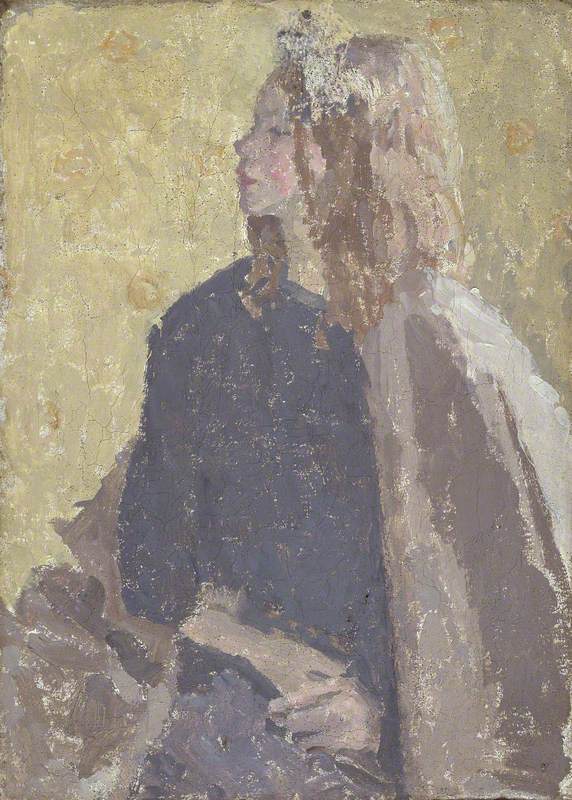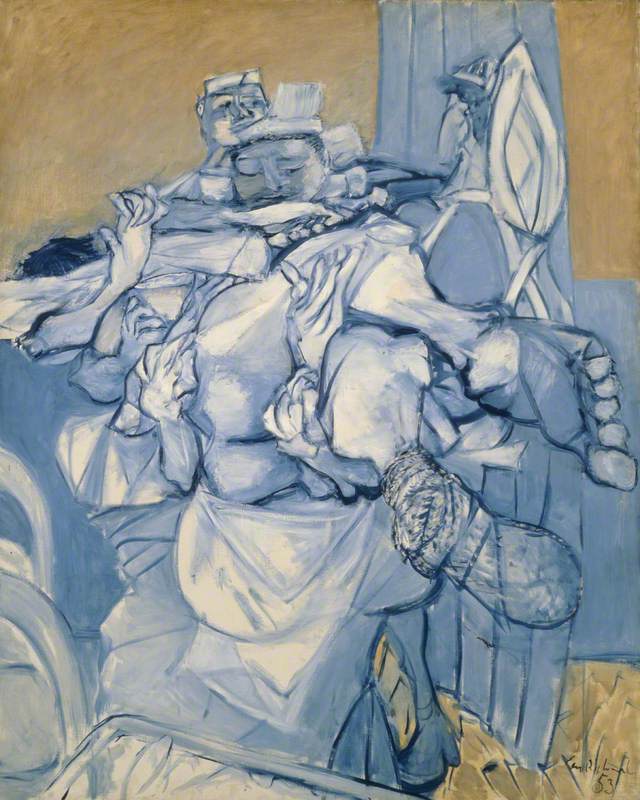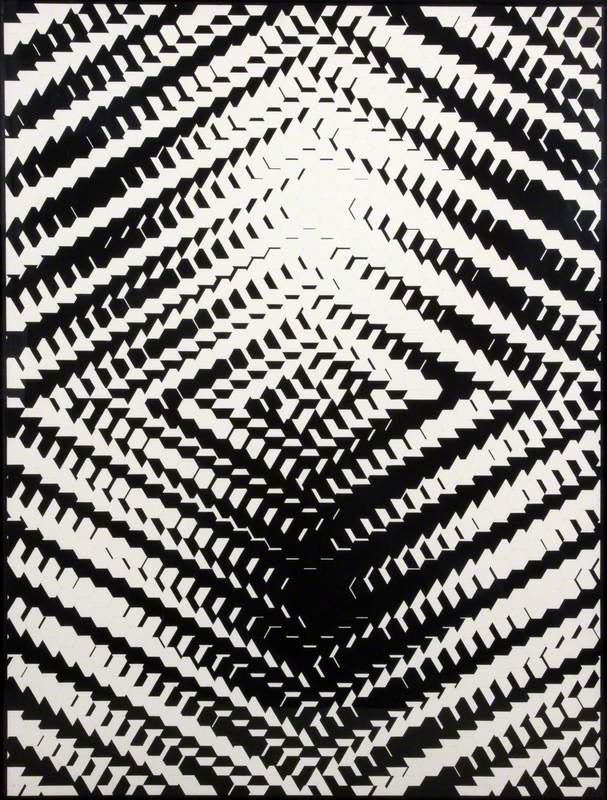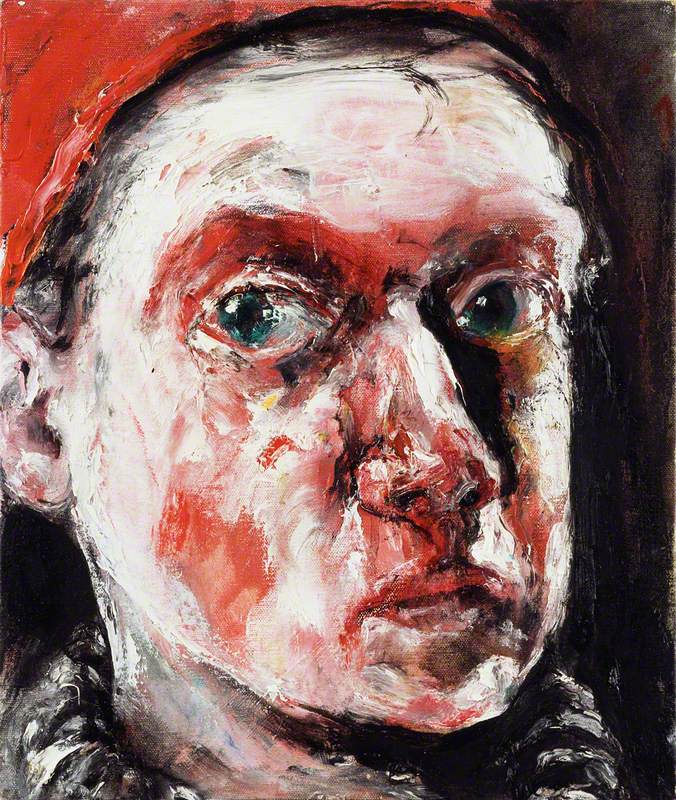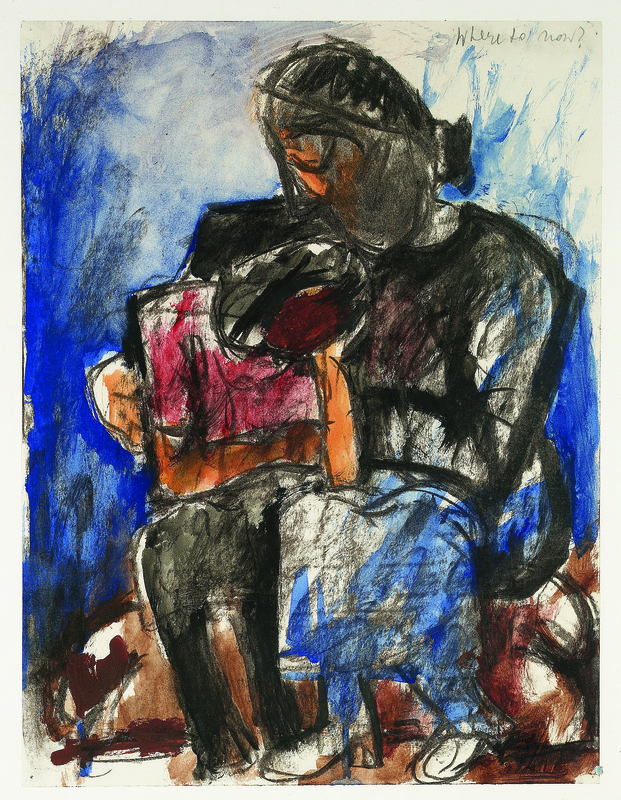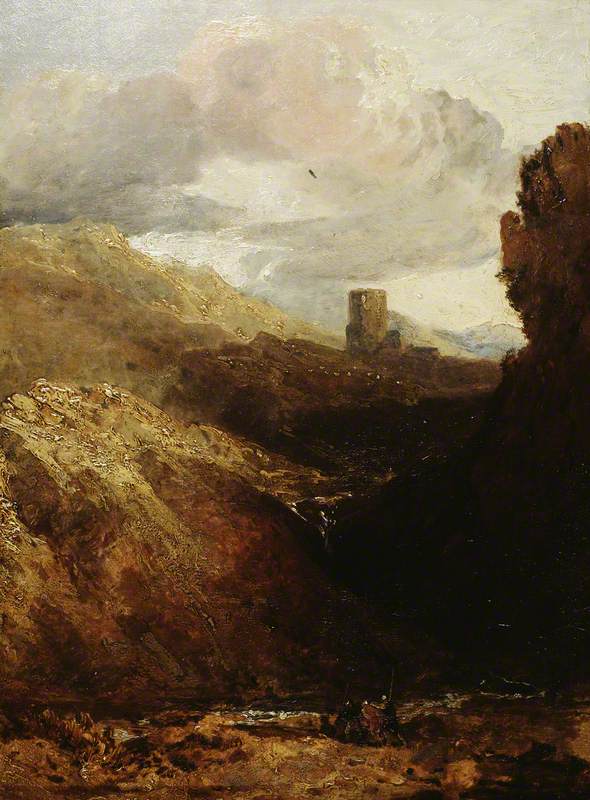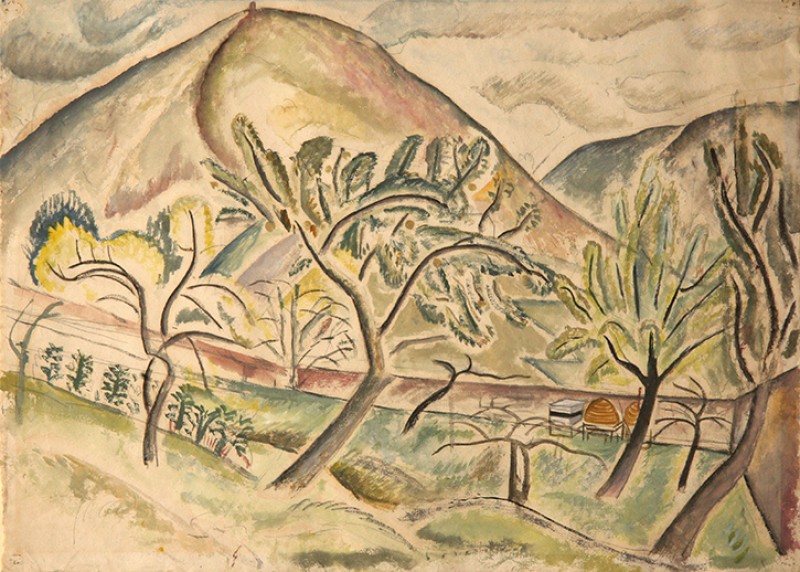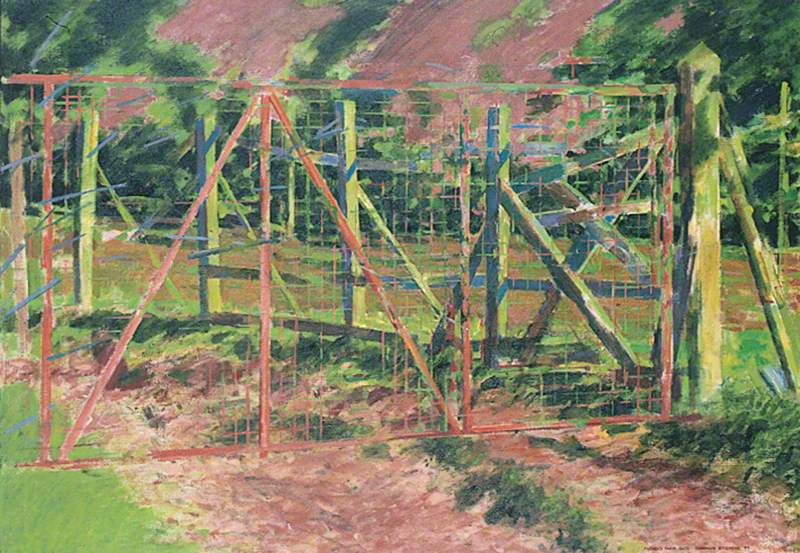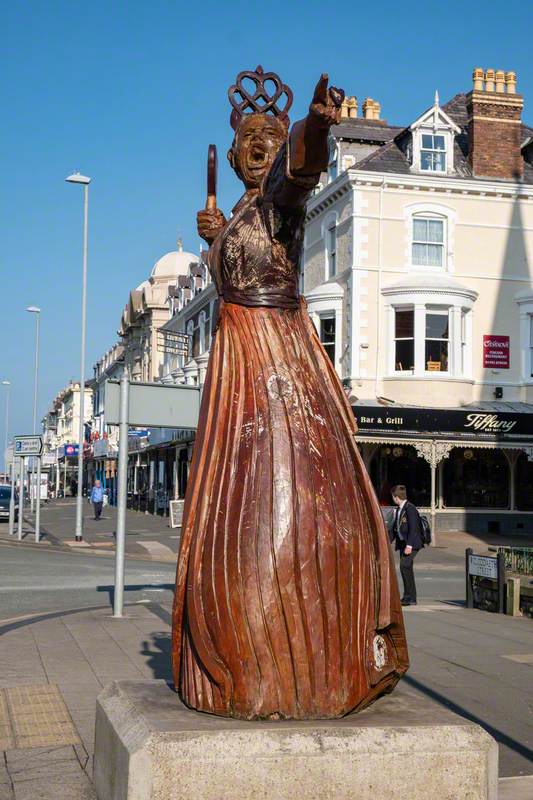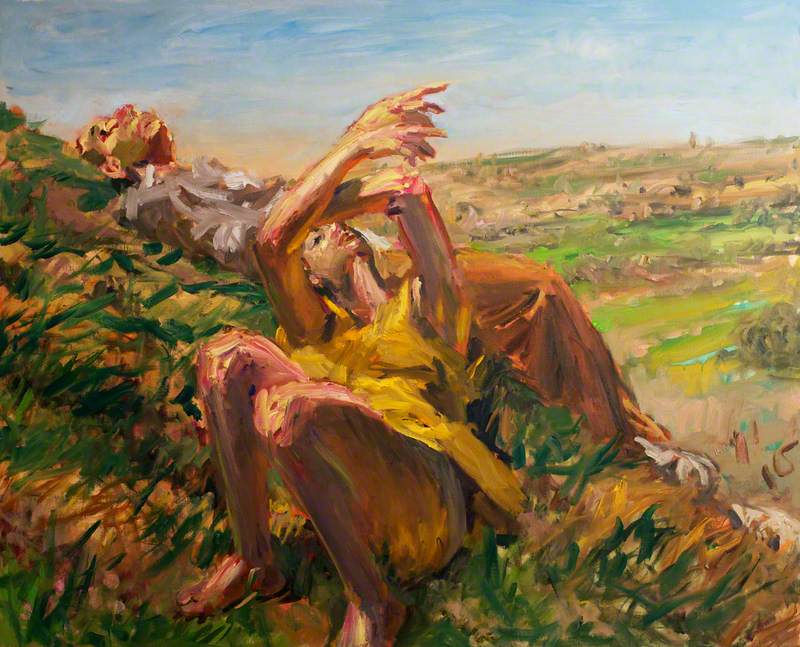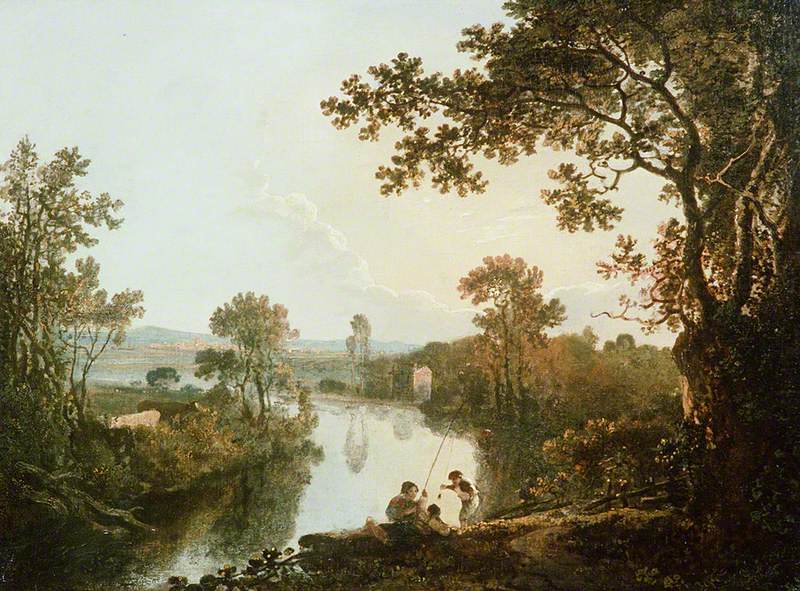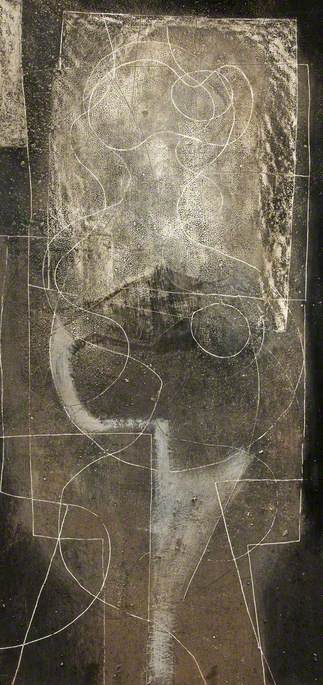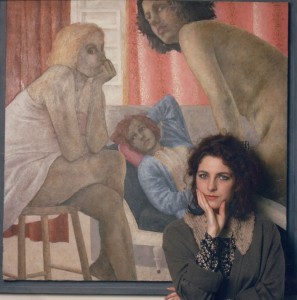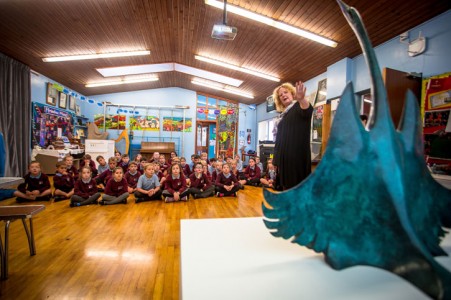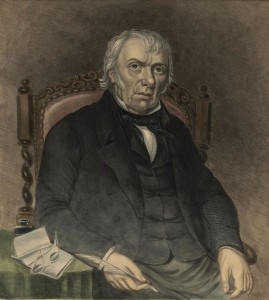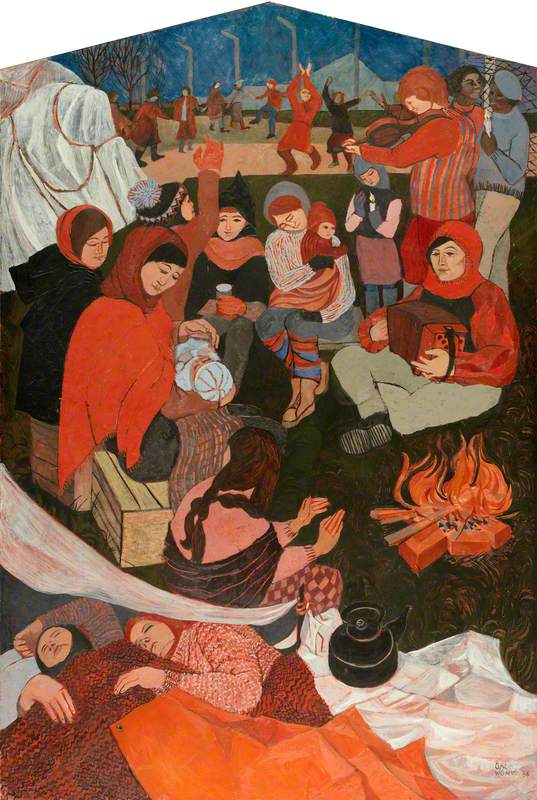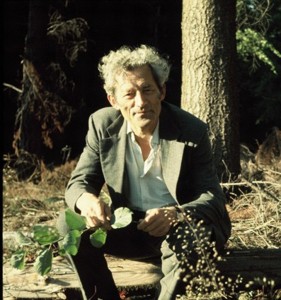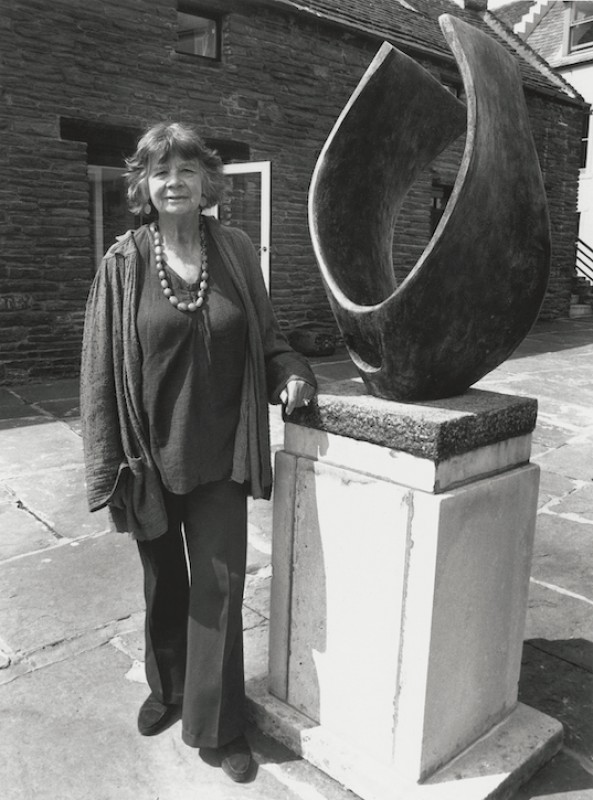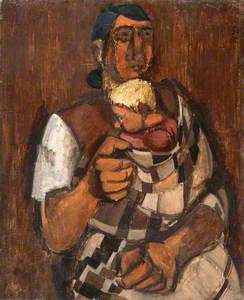Welsh artists haven’t always benefitted from appreciative curators or fair-minded audiences in their own times. Since 1938, the Contemporary Art Society for Wales (CASW) has purchased their work and given it to museums, galleries
So far, CASW has acquired nearly 900 paintings, prints, photographs, films, craft works
After Josef Herman escaped Poland in the 1930s his entire family died in the Holocaust. He arrived in a mining village in the Swansea Valley in 1943 and decided to make it his chief subject. He stayed for eleven years.
The exhibition employs a fraction of the collection to show how contemporary art from Wales and its appreciation have changed from the ‘then’ of the 1930s to the ‘now’ of the twenty-first century. Some of the works are loved, others may provoke more unsettling reactions. Among the artists represented are some ripe for re-evaluation; after all, a national collection should seek to ensure that artists largely overlooked in their own day can be reconsidered alongside more famous names.
When CASW began collecting in the late 1930s some people were excited by the modernist possibilities of surrealism, expressionism and abstract art but others were deeply suspicious of them. The purchasers appointed by CASW were free to follow their own expertise and choose what they thought the best of contemporary art. The first, J. B. Manson, bought conservatively but secured for the collection a true masterpiece by Gwen John. Others were keen to support younger talents and give air to new ideas. They acquired paintings by the refugee expressionist Josef Herman, the
Manson, the controversial former Tate director, had little time for modern art but his eye for Post-Impressionism spotted the quality of Gwen John. She had only one exhibition in her lifetime and when she died in 1939, Girl in Profile was among many works stacked in her Paris studio. CASW acquired it the next year for £100. It captures the intimacy of being with the model in a small room. It is built up in soft
After Josef Herman escaped Poland in the 1930s his entire family died in the Holocaust. He arrived in a mining village in the Swansea Valley in 1943 and decided to make it his chief subject. He stayed for eleven years. The curator David Bell wrote about his expressionist vision of the mining community, ‘He does not tell us what Ystradgynlais and its people look like, but out of his feelings towards the place and its people he creates a new world of form and shape and
Ceri Richards was one of the most brilliant Welsh artists of the twentieth century and it is appropriate that his career is represented in the CASW collection by as many as eleven works. The Unconscious Man is a particularly uncompromising and serious example. When he painted it he had recently been
Brenda Chamberlain had seen the work of Gauguin as a teenager and been excited by surrealism and abstraction. CASW bought one of her major works, Children on the Sea Shore, in 1952. Her subject in several paintings of the period was the children of Bardsey island, where she lived from 1947. She made many sketches and wrote in her notebooks: ‘Their faces have already the closed unexpectant look of their elders, for they know none of the small intimate delights and surprises of childhood.’ She wrote on the white of the canvas and continued the painting in black, allowing crazing to add texture. It is a compelling image of sturdy, wind-blown children set apart from the world, oddly clothed, playing with the simplest toys, fenced in by fishing nets. Yet perspective lines reach out to a far horizon and the great shell and the gull one girl clutches suggest a special connection with nature. CASW loaned the painting to an exhibition in the Netherlands of the Women’s International Art Club and the Arts Council exhibition of British Romantic Painters of the Twentieth Century before gifting it to Cyfarthfa Castle Museum and Art Gallery in Merthyr Tydfil.
Pictures were loaned out with an enthusiasm that would put many institutions public engagement practices to shame even today. CASW held exhibitions in museums, town halls, miners’ institutes and industrial premises, often lending works to them for extended periods. It then passed the works to permanent public collections. At the end of its first quarter century, it had acquired some 350 paintings, drawings, prints and sculptures.
In the 1960s visual art embraced new media and new movements. CASW responded through purchasers who were keen to venture onto new ground. Many bought large abstract paintings by artists such as Terry Setch and Jeffrey Steele. They acquired affordably the work of rising stars of the future such as the sculptor David Nash. Previously disregarded media of photography and film were brought into the collection for the first time. Despite the international outlook of artists and curators, purchasers largely maintained CASW’s mission to bring attention to artists from Wales. By 1995 the collection contained around 700 works.
Thunderball (Axminster)
1965–1975
Terry Setch (b.1936) 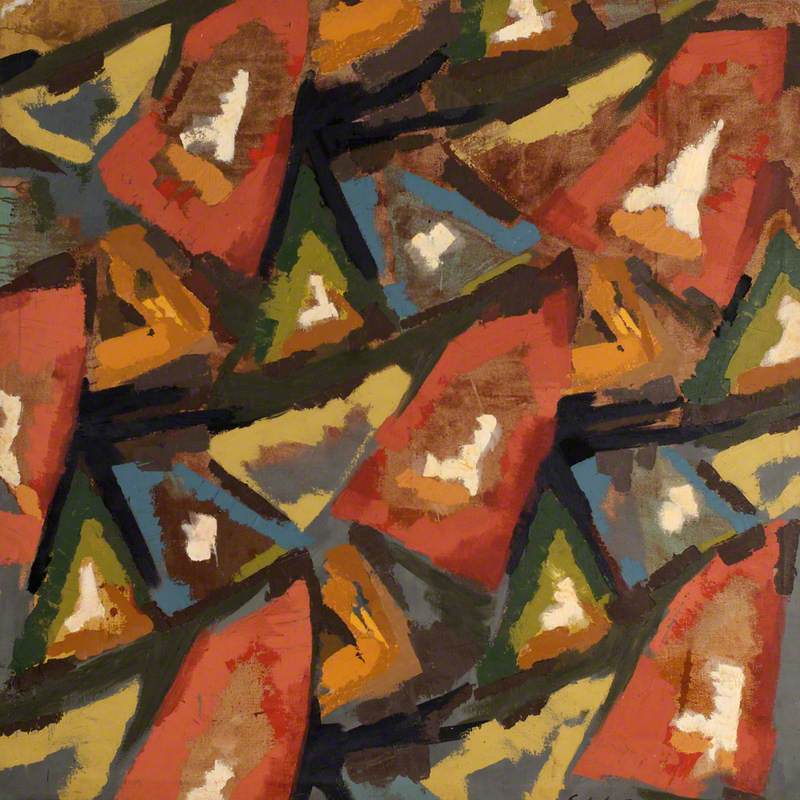
By the late
The founders of CASW would have been bemused by the Space-Age works of Jeffery Steele, who sought vibrant visual effects based on geometrical relationships. Brought up in Cardiff, Steele was among the pioneers of Op Art. He worked solely in black and white for several years and produced immaculate paintings that used systematic progressions of shapes. He taught at Cardiff and Newport art schools before moving to Portsmouth in 1968. CASW bought Hecuba in 1964 with additional support from the Calouste Gulbenkian Foundation.
Sue Williams’ work was described by the Western Mail as thinly disguised pornography, a remark that misunderstood her completely but demonstrated her ability to challenge viewers. She responds to the complexities of relationships between the sexes. The couple in Collaboration
CASW purchasers have continued to see painting as relevant and worthy of collecting alongside conceptual art and new media. Shani Rhys James is a former winner of the National Eisteddfod Gold Medal and the Jerwood Painting Prize. She takes herself as her model, looking straight back from the mirror. As well as large, complex figure compositions she produces intense, solitary heads that conjure a presence from brushstrokes, dabs
Why collect contemporary Welsh art? For three generations doing so has supported many of the best artists of Wales, given life to the creative sector, inspired countless people in countless ways and helped tell Wales about itself. Between the 1930s and the present, Welsh art has been transformed.
'Then + Now: 80 Years of Collecting Contemporary Art for Wales' is on display at:
- Pierhead Building, Cardiff Bay, in association with the National Eisteddfod, 4 August to 11 August 2018
- Oriel Plas Glyn-y-Weddw, Llanbedrog, 7 October to 25 November 2018
- MOMA Machynlleth, 8 December 2018 to 26 January 2019
- Glynn Vivian Art Gallery, Swansea, 9 February to 12 May 2019
A 72-page exhibition
Peter Wakelin, writer
